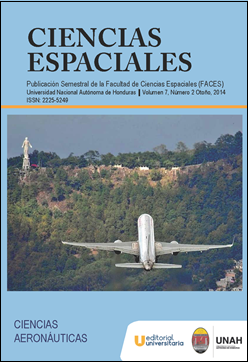The National Aeronautic Council: Analysis of the current situation in the institutional framework of the Civil Aviation Honduras
DOI:
https://doi.org/10.5377/ce.v7i2.2521Keywords:
Aeronáutics, Aeronáutical National Council, Honduran Civil Aeronautics, Airport SystemAbstract
In Honduras the civil aeronautics is directed by the Civil Aeronautic Law of 2004, in this law is established the National Aeronautic Council (CAN in Spanish) like an advisory body that includes several state entities and Honduran society with the principal objective of identify, arrange and propose recommendations that support and contribute to reach the objectives of the referred law. Considering that the civil aeronautics is related with many national issues like security, tourism, environment, economy and others, is important that the different sectors be coordinated and take decisions by consensus, all this will allow a sustainable, ordered and consistent development of civil aeronautics, all this entities will be together in the NAC. It has been described the situation of the NAC, relations between members and their proposals; also this research gives a general view of the experience that other countries like Chile, Ecuador and Dominican Republic that already have similar council organs like the NAC experienced, and mentioned what could be some of the strategies and strengthens that allowed them to success in the develop the civil aeronautics in their countries; all this with the objective of learn, adapt, improve y adopt good practices that turns around the need of operate the NAC in Honduras. However, just the operation is not enough, is necessary that this entity gets an executive organ status that could have the faculty of planning, define, agree and put in practice a State policy for the development of the civil aeronautics in Honduras, this level of deliberation has been, as the authors of this research believe, the clue of the success in the countries where the NAC´s similar organs has worked giving relevant contributions.
Revista Ciencias Espaciales, Vol. 7(2) 2014, 74-95
Downloads
1129




